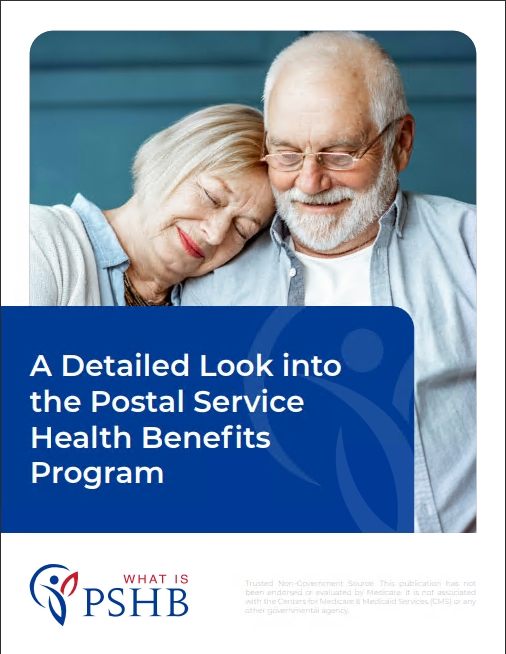Key Takeaways
-
Understanding how PSHB premiums are structured in 2025 can help you make more informed decisions about your healthcare plan.
-
Your premiums, deductibles, and out-of-pocket costs play a significant role in shaping your budget and should be carefully reviewed.
Unpacking PSHB Premiums: What’s Included?
In 2025, the Postal Service Health Benefits (PSHB) program offers a structured approach to premiums, ensuring postal workers and retirees have access to healthcare coverage tailored to their needs. However, understanding what’s included in your premium can save you from budget surprises.
PSHB premiums are not just the monthly amount you pay for health coverage. They often include contributions toward:
-
Medical Services: Covering hospital stays, doctor visits, and preventive care.
-
Prescription Drugs: Incorporating Medicare Part D for those eligible.
-
Supplemental Benefits: Offering vision, dental, and hearing care, depending on the plan.
The government contributes approximately 70% of the total premium, leaving enrollees responsible for the remaining share. These percentages ensure affordability while maintaining comprehensive coverage.
Monthly Premiums and Their Role in Your Budget
Your monthly premium is a recurring cost you must account for in your budget. For PSHB plans in 2025, premiums vary based on factors such as:
-
Coverage Type: Whether you enroll in Self Only, Self Plus One, or Self and Family.
-
Plan Tier: High-deductible plans often have lower premiums but higher out-of-pocket costs, while low-deductible plans come with higher premiums.
-
Geographic Location: Where you live can influence the cost due to regional pricing differences.
To ensure your premium fits into your financial plan, compare the available options during Open Season and evaluate how the monthly cost aligns with your healthcare needs.
Understanding Deductibles and Out-of-Pocket Costs
Premiums are only one part of your total healthcare expenses. Deductibles and out-of-pocket costs can significantly impact your budget. In 2025, PSHB deductibles range from $350 to $2,000 for in-network services, depending on the type of plan.
-
Deductibles: The amount you must pay before your plan begins covering costs. Higher deductibles generally result in lower premiums.
-
Coinsurance and Copayments: After meeting your deductible, you’ll still share a percentage of the costs through coinsurance or fixed amounts through copayments.
-
Out-of-Pocket Maximums: These caps limit how much you spend on healthcare services in a year. For 2025, PSHB out-of-pocket maximums are $7,500 for Self Only plans and $15,000 for Self Plus One and Self & Family plans for in-network services.
By understanding these components, you can better prepare for unexpected medical expenses and avoid financial strain.
The Role of Medicare Integration in Reducing Costs
If you’re Medicare-eligible, integrating your Medicare Part B with your PSHB plan can lead to cost savings. In 2025, many PSHB plans waive or reduce deductibles and lower copayments for enrollees with Part B. This integration also provides access to a Medicare Part D Employer Group Waiver Plan (EGWP) for prescription drugs, further reducing costs.
However, enrolling in Medicare Part B comes with an additional monthly premium. Before deciding, weigh the benefits of reduced out-of-pocket costs against the added premium to determine if this integration works for your financial and healthcare needs.
How PSHB Premiums Compare to FEHB
The transition from the Federal Employees Health Benefits (FEHB) program to the PSHB program introduces some differences in premiums and benefits. While the government continues to cover about 70% of premiums, the PSHB program is specifically tailored for postal employees and retirees, offering:
-
Enhanced Medicare integration options.
-
Customized coverage for postal-specific needs.
-
Streamlined enrollment processes for new and existing members.
For those familiar with FEHB, reviewing PSHB plan brochures during Open Season can help clarify these differences and ensure your selected plan aligns with your healthcare and financial priorities.
Open Season: Your Window to Adjust
The 2025 PSHB Open Season, running from November 11 to December 13, offers the opportunity to evaluate and adjust your healthcare plan. During this period, you can:
-
Review Plan Options: Compare premiums, deductibles, and out-of-pocket maximums.
-
Consider Life Changes: Account for any changes in family size, income, or healthcare needs.
-
Switch Plans: Enroll in a new plan or adjust your current one to better fit your budget.
Outside of Open Season, changes are only allowed during Qualifying Life Events (QLEs), such as marriage, birth, or retirement. Take full advantage of this window to secure a plan that meets your needs and budget.
Factors That Affect Your Premiums
Several factors influence the cost of your PSHB premiums in 2025. Understanding these can help you anticipate changes and plan accordingly:
-
Government Contributions: The federal government covers approximately 70% of the premium cost, but your share may vary by plan and coverage type.
-
Plan Benefits: More comprehensive plans with additional benefits often come with higher premiums.
-
Market Trends: Changes in healthcare costs and utilization trends can affect premiums annually.
-
Medicare Enrollment: Enrollees with Medicare Part B often experience reduced out-of-pocket costs, but this may not directly lower your PSHB premium.
Keeping these factors in mind will help you make informed decisions and avoid unexpected expenses.
Strategies to Manage Healthcare Costs
Balancing premiums, deductibles, and other healthcare costs can feel overwhelming. Here are some strategies to manage your expenses:
-
Compare Plans Thoroughly: Use plan brochures to understand cost-sharing details.
-
Maximize Preventive Care: Many plans cover preventive services at no additional cost, helping you avoid larger medical bills later.
-
Use In-Network Providers: Sticking to in-network doctors and facilities ensures lower out-of-pocket costs.
-
Track Healthcare Spending: Monitor your expenses throughout the year to anticipate when you might reach your deductible or out-of-pocket maximum.
-
Review Supplemental Benefits: Explore included benefits like dental, vision, and wellness programs to get the most value from your plan.
By actively managing your healthcare costs, you can maintain control over your budget while ensuring access to necessary care.
What to Watch for in 2025
With the PSHB program’s implementation, staying informed is crucial. Here are key elements to monitor:
-
Annual Notice of Change (ANOC): This document outlines changes to your plan’s premiums, benefits, and cost-sharing for the upcoming year. Review it carefully to avoid surprises.
-
Premium Adjustments: Be aware of potential increases or decreases in premiums during Open Season.
-
Out-of-Pocket Limits: Ensure your plan’s limits align with your financial capabilities.
-
Plan-Specific Updates: Each PSHB plan may offer unique changes or enhancements, so pay attention to the details.
Being proactive about these updates ensures you’re prepared for any adjustments to your healthcare coverage.
Planning Ahead for a Healthy Future
Your PSHB premiums and healthcare expenses are an essential part of your financial planning. By understanding how premiums are structured and staying informed about program updates, you can make choices that benefit both your health and your wallet. Use resources like plan brochures, comparison tools, and Open Season to navigate your options with confidence.





